I built a Bolger Bobcat back in 1998 and, while I very much enjoyed building and sailing it, three years later I sold it as I turned my attention to another boat. I soon came to regret selling my catboat. This past winter, with space in the shop and no project to tide me over, I decided to build another one and purchased Harold “Dynamite” Payson’s Build the Instant Catboat. This 42-page building manual notes that the 12′ Bobcat was designed in 1985 by Philip Bolger for H.H. Payson and Co. as a hard-chined, tack-and-tape plywood adaptation of the carvel-planked Beetle Cat designed in 1921 by John Beetle of New Bedford, Massachusetts.In his book, Payson lays out the project in great detail and with frequent humor. He includes multiple detailed drawings, photos, and step-by-step instructions, including rigging the sail and what type of line to use for the halyards.The hull panels and permanent bulkheads are drawn out on sheets of 1/4″ plywood; all of the parts can be made with 10 sheets, including the deck panels, centerboard trunk, centerboard, and bulkheads. Payson recommends marine-grade or AC exterior plywood; I went with fir AC. The plywood I got was excellent quality, and I had no problems bending the panels into the shapes they needed to be. The manual provides measured drawings for the hull planking—there is no need for spiling the shapes from the building form—and goes into great detail on drawing and cutting out the pieces.
Join The Conversation
We welcome your comments about this article. If you’d like to include a photo or a video with your comment, please email the file or link.



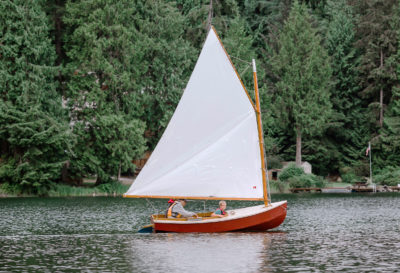
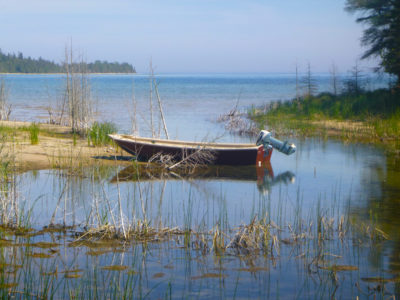
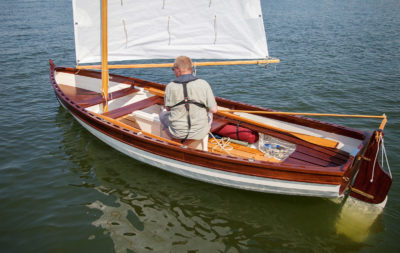
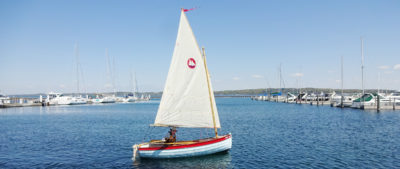
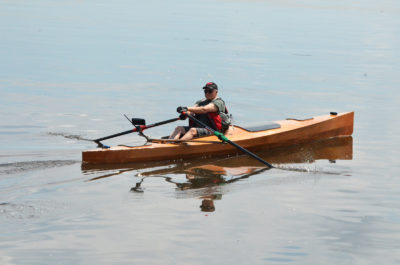
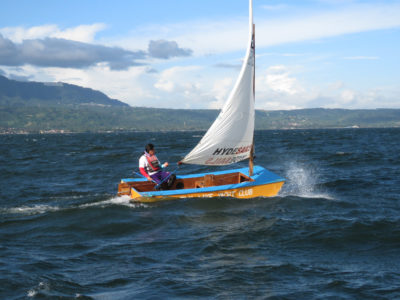
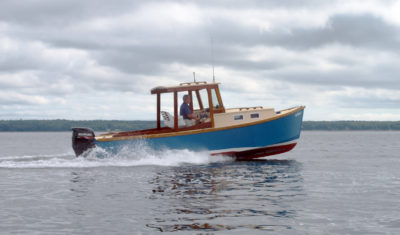
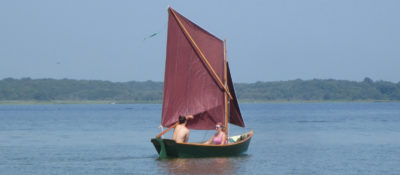
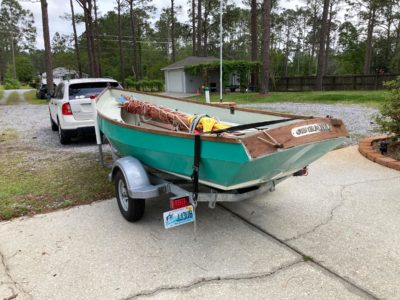
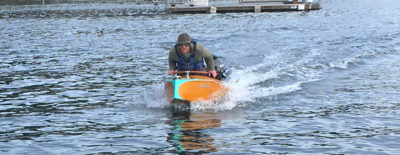
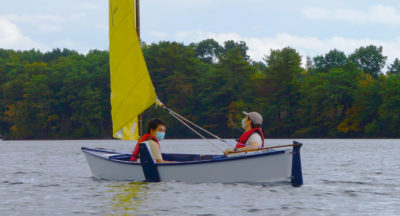
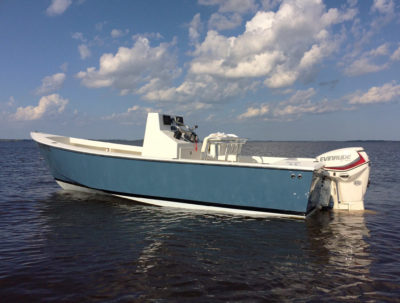
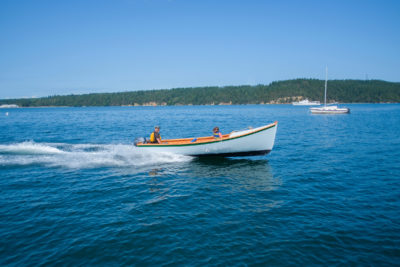
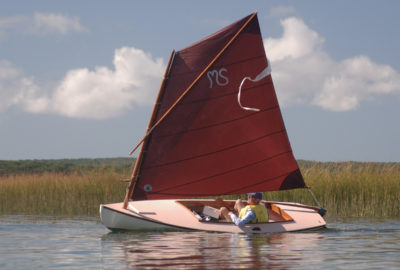
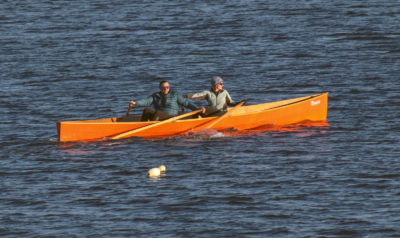
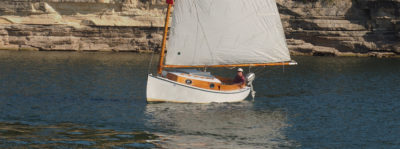
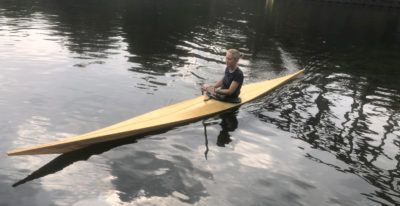
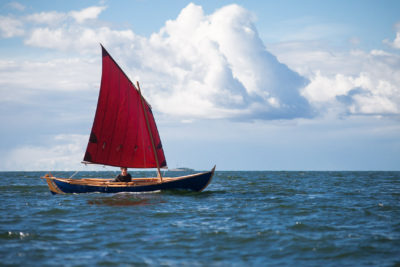
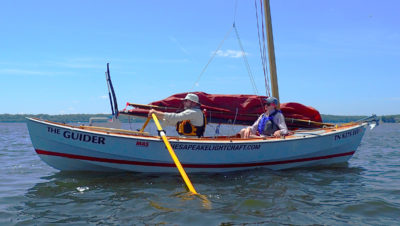
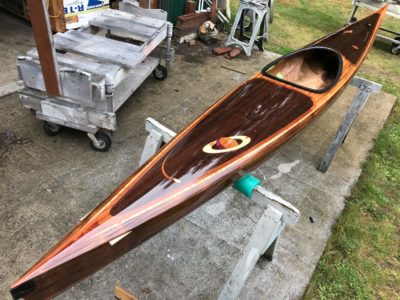
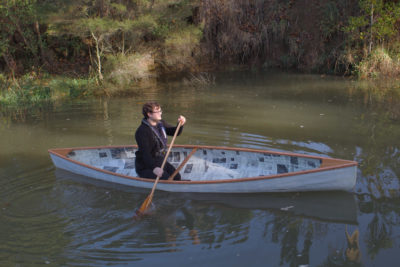
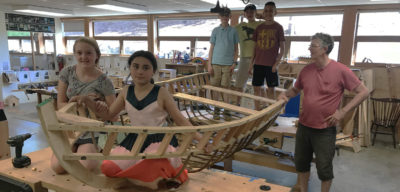
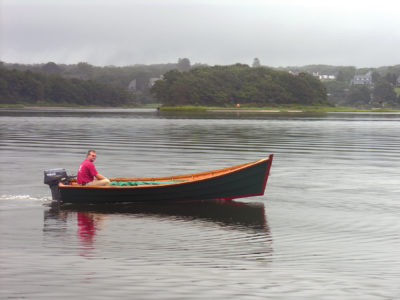
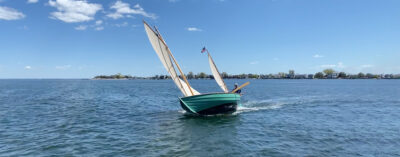
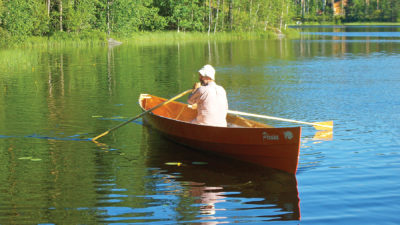
I built the Bobcat back in 2004/5. Got the plans and full sized patterns from Payton. It was an easy build and much fun sailing. I was initially skeptical of the rudder design but it proved to be excellent. Built a motor mount on the transom for a 2-hp Yamaha.
I’m wanting a motor mount for my Bobcat but haven’t found a suitable mount. Could you provide any details on how you attached it to the transom?
I built a Bobcat and can vouch for what’s reported here; it’s an excellent boat and build. Surprisingly close-winded, but 30 degrees? No. The stern seat’s useless; in my boat it serves only to hold an Opti flotation bag in place. I saved a ton of time and money by using the spars and sail from a wrecked Beetle Cat — identical above-deck dimensions except for the roach in the Beetle sail; requires minor fiddling with the step. Works fine.
No one has mentioned the planking. Is it scarfed or using butt blocks to get the length
needed ?
Great looking little sailor !
Regards
David Jackson
David,
Butt blocks are used.
Hi John,
What is the other boat in the pic of your workshop ?
Regards
David Jackson
David,
It is my steam launch, E. SCOTT HAMMOND.
There was an editorial about it in the October 2018 issue of Small Boats.
John
I miss my Bobcat! Here’s a little video I made sailing her last winter.
What a great video!!
Thanks for sharing it.
Thank you! Your piece was a great read! I am envious of your nearby lake. I buy and sell a lot of boats in need. The Bobcat is one I would definitely own again.
An observation about bending plywood panels: It is a time-honored practice to use hot water and towels for bending plywood, but in fact, the water adds nothing to the process (except to distribute the heat). The problem with this, besides the inevitable messiness, is that it also raises the grain, and means the wood has to dry out before moving on to other procedures. Fir plywood is especially problematic with grain raising. Instead, I like to use dry heat for bending (and it works on solid wood as well as plywood).
For a panel the size of Bobcat’s bilge plank, I’d use a well spread out, broad source of heat, such as an electric infra red space heater, the kind with a parabolic reflector. It only takes a few minutes’, especially with plywood as thin as 1/4″, to heat it sufficiently. You can check with a bare hand to tell if it seems hot enough. Apply bending pressure every so often, until you can feel the panel relax and start to bend. After withdrawing the heat, the wood stiffens up very quickly, and will hold its bent shape. If it still seems stubborn, it’s easy enough to reapply the heat for another try.
For smaller pieces, a heat gun works well. Be careful not to scorch the wood.
David, I built a Bobcat in the winter of 1999/2000. In a barely heated detached double garage in MN. I don’t recall any big problems bending the plywood. I’d previously built a Simmons Sea-Skiff and after bending the forward end of keelson at on that … The Bobcat was my first stitch and glue and I was more worried about how that would go, so I may have spaced bending problems.
An aside: My wife and I happened to be in Maine in 1999 and stopped in to say hello to Harold Payton. We chatted for a short time with Harold and his wife in his shop. I may have bought plans for the Bobcat that day. Later that day or the next I went to Bohndell Sails in Rockport and ordered a sail for the Bobcat.
I’ve always admired this design and have Payson’s book. That curved coaming is such a nice feature and it, along with your article, has renewed my interest building one for myself
My father and a group of his age or there abouts finished a bunch of cold-molded hulls, I believe purchased surplus right after WW II. The hulls were found some where in Delaware or Maryland by a friend. They ended up as sailing dinghies, 9′ long, mast about 18′, with 65 sq ft sail area, called Bobcats. They were centerboarders. They were a lot of fun for us as kids growing up with all kinds of racing and special events, i.e. scavenger hunts, pajama races, picnics, etc. Also frost-biting in the winter. This was at the yacht club in Sea Cliff, Long Island, New York, off western Long Island Sound. In the early ’50s they started another building program for Penguins.
I’m finishing a half-built Bobcat I dragged home from up north. I have a few sails in the Beetle Cat and so I deleted the rear seat for more lounge room. Can’t wait to hit the local waters next year. Have a Sailrite kit just waiting for those winter doldrums. Thanks so much for the article and photos.
John,
Nice article!
Has anyone thought of starting a Bobcat Owners Association?
It would be nice to share information about details of the build, trailering, adventures and observations.
This is my next build and more photos of the building process are always welcome.
I finished building a Bobcat from a half-built hull and converted a salvaged Beetle Cat rig for it, which works splendidly well. I do wish Phil Bolger hadn’t specified that wide seat-like object in the stern. You can sit there, but you shouldn’t; it throws the trim off and makes the boat look awkward. Check out the first photo in this article: the boat’s squatting with the bow out of the water. Look at where Bolger places the sailor in his profile drawing: forward of that horrid back bench. I put side benches in, which cramps the cockpit somewhat, but the boat sails like a dream with the better trim.
Andrew,
I agree the aft seat is awkward and I had thought about the side benches you mentioned.
I usually end up sitting on the side deck and made seats that fit over the coaming.